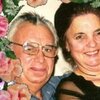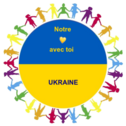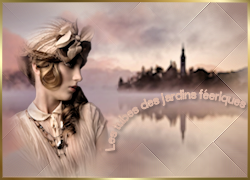-
Photos Anciennes: Le Mur de Berlin
Le Mur de Berlin
Le mur de Berlin (en allemand Berliner Mauer), « mur de la honte » pour les Allemands de l'ouest et « mur de protection antifasciste » d'après la propagande est-allemande, est érigé en plein Berlin à partir de la nuit du 12 au 13 août 1961 par la République démocratique allemande (RDA), qui tente ainsi de mettre fin à l'exode croissant de ses habitants vers la République fédérale d'Allemagne (RFA). Le mur, composante de la frontière intérieure allemande, sépare physiquement la ville en Berlin-Est et Berlin-Ouest pendant plus de vingt-huit ans, et constitue le symbole le plus marquant d'une Europe divisée par le Rideau de fer. Plus qu'un simple mur, il s'agit d'un dispositif militaire complexe comportant deux murs de 3,6 mètres de haut4 avec chemin de ronde, 302 miradors et dispositifs d'alarme, 14 000 gardes, 600 chiens et des barbelés dressés vers le ciel. Un nombre indéterminé de personnes sont victimes des tentatives de franchissement du mur. Cependant, il apparait que les gardes-frontière est-allemands et les soldats soviétiques n'hésitent pas à tirer sur les fugitifs.
L'affaiblissement de l'Union soviétique, la perestroïka conduite par Mikhaïl Gorbatchev, et la détermination des Allemands de l'Est qui organisent de grandes manifestations, provoquent le 9 novembre 1989 la chute du « mur de la honte », suscitant l'admiration incrédule du « Monde libre » et ouvrant la voie à la réunification allemande. Presque totalement détruit, le Mur laisse cependant dans l'organisation urbaine de la capitale allemande des cicatrices qui ne sont toujours pas effacées aujourd'hui. Le mur de Berlin, symbole du clivage idéologique et politique de la guerre froide, a inspiré de nombreux livres et films. Aujourd'hui, plusieurs musées lui sont consacrés. Wikipedia
A boy stands on a coal scuttle to peer over the wall of a sports stadium in Berlin, 8th January 1951. (Photo by Keystone Features/Hulton Archive/Getty Images)
Boys bring buckets to stand on for a view over the wall of a sports stadium in Berlin, 8th January 1951. (Photo by Keystone Features/Hulton Archive/Getty Images)
West Berlin policemen and East German Volkspolizei face each other across the border in Berlin, circa 1955. (Photo by Three Lions/Hulton Archive/Getty Images)
Soviet tanks and troops at Checkpoint Charlie, a crossing point in the Berlin Wall between the American and Soviet sectors of the city at the junction of Friedrichstrasse, Zimmerstrasse and Mauerstrasse, February 1961. (Photo by Daily Express/Hulton Archive/Getty Images)
American tanks and troops at Checkpoint Charlie, a crossing point in the Berlin Wall between the American and Soviet sectors of the city at the junction of Friedrichstrasse, Zimmerstrasse and Mauerstrasse, February 1961. (Photo by Express Newspapers/Getty Images)
Two mothers can only wave to their children and grandchildren in the Soviet sector of Berlin from across the Berlin wall. (Photo by Keystone/Getty Images). 1961
On a day when the Berlin Wall is open, throngs of West Germans wait for friends and relatives to arrive from the Eastern sector. (Photo by Three Lions/Getty Images). 1960
Families and friends, once neighbours, now stand divided and wave across to each other over the Berlin wall. (Photo by Keystone/Getty Images). 1961
Two little girls in a West German street chat with their grandparents in the window of their home in the eastern zone, separated only by a barbed wire barricade. (Photo by Keystone/Getty Images). 14th August 1961
A citizen of East Berlin peers through barbed wire at a West Berliner over the Berlin Wall, Berlin, Germany, 1960s. The mass immigration of Germans from Communist Berlin to Western Berlin inspired East Germany military leader Erich Honeker to construct the blockade, a barricade of concrete walls, mine fields and guard posts that stretched for 100 miles. (Photo by Hulton Archive/Getty Images)
A woman is lowered from a window in Bernauer Strasse on a rope to escape into the western sector of Berlin after the post-war division of the city. (Photo by Keystone/Getty Images). 10th September 1961
Soldiers building the Berlin Wall as instructed by the East German authorities, in order to strengthen the existing barriers dividing East and West Berlin. (Photo by Keystone/Getty Images). 1961
Posters of Nikita Khrushchev, Walter Ulbricht, Wilhelm Pieck and the East German Premier Otto Grotewohl on an East Berlin Wall. (Photo by Keystone/Getty Images). 28th August 1961
Russian soldiers leaving the British sector march back into the East Sector, after laying wreaths on the Soviet monument in West Berlin on the 43rd anniversary of the Russian Revolution. The Brandenburg Gate is on the right. (Photo by Keystone/Getty Images). 7th November 1960
Soldiers outside the entrance to Berlin's Potsdamer Platz underground station next to a section of the Berlin Wall. (Photo by Central Press/Getty Images). Circa 1961
East German troops and police seal off the frontier between East and West Berlin with barbed-wire to control the flow of refugees. (Photo by Keystone/Getty Images). 15th August 1961
Walter Ulbricht (1893–1973) first Secretary of the Communist Party of East Germany and deputy Premier of the German Democratic Republic. He is reviewing workers, known as “Industry Combat Groups” who are building the Berlin Wall. (Photo by Keystone/Getty Images)
East German military personnel supervising construction of the Berlin Wall. (Photo by Central Press/Getty Images). August 1961
A tear gas grenade explodes next to an East German armoured car during riots on the first anniversary of the building of the Berlin Wall. (Photo by Keystone/Getty Images). Circa 1960
Dieter and Monika Marotz of Bernauerstrasse, Berlin, wave to relatives after their wedding, 8th September 1961. The newlyweds live in the western sector of Berlin, while their relatives living on the same street are in the Eastern sector and unable to attend the ceremony. (Photo by Keystone/Hulton Archive/Getty Images)
Relatives of newlyweds Dieter and Monika Marotz of Bernauerstrasse, Berlin, wave to the couple after their wedding, 8th September 1961. Although the Marotz's and their relatives live in the same street, their houses are in the western and eastern sectors, respectively, of the divided city, leaving them unable to be at the ceremony together. (Photo by Keystone/Hulton Archive/Getty Images)
Members of the Volkspolizei, the East German national police, check an elderly man's papers at the Berlin Wall, 11th September 1961. Only those whose houses are adjacent to the wall are allowed within 100 meters of it. (Photo by Keystone/Hulton Archive/Getty Images)
-
Commentaires
La Tigresse au coeur tendre






















 Twitter
Twitter del.icio.us
del.icio.us Facebook
Facebook Digg
Digg Technorati
Technorati Yahoo!
Yahoo! Stumbleupon
Stumbleupon Google
Google Blogmarks
Blogmarks Ask
Ask Slashdot
Slashdot
























